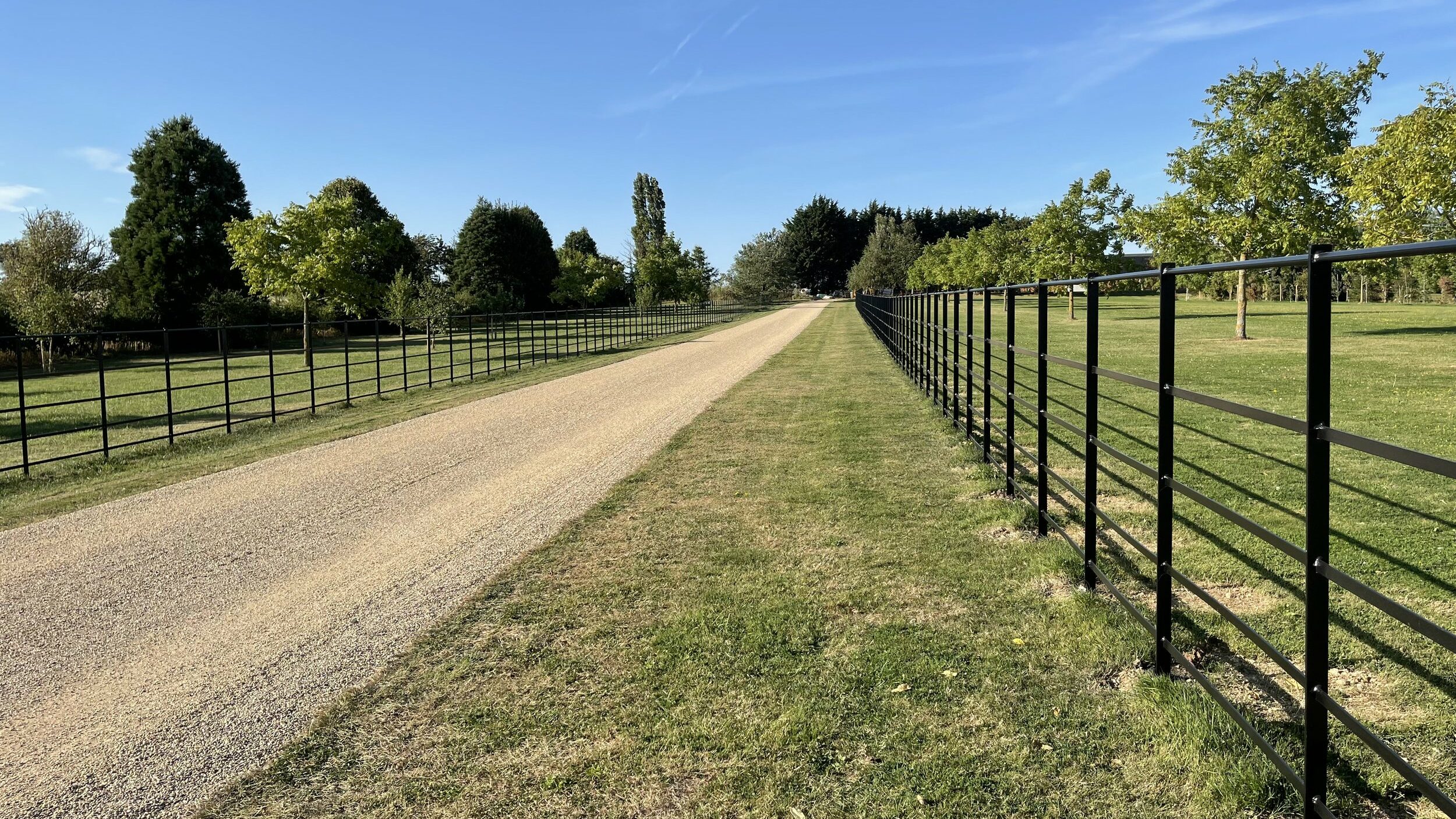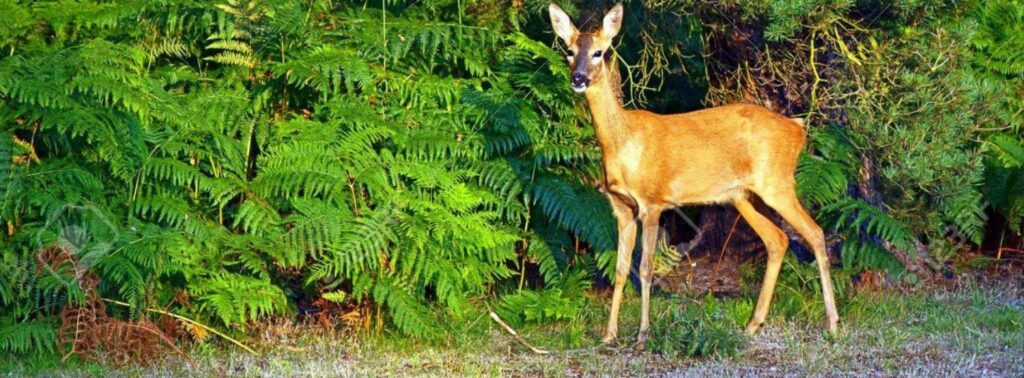There are six species of deer around the UK, all of which are wonderful and majestic to watch. However, they are veracious feeders and can become a nuisance when they decimate flower beds, damage trees and destroy saplings.
This is especially true of roe and muntjac, who have even been known to visit small gardens to feed, destroying plants and flowers and vital habitats in the process.
In this blog, we’re going to be covering exactly what you need to do to protect your land from the impact of deer.
Species
Due to a lack of predators for the deer, they are effectively able to breed and impact their habitat uninhibited, which has meant that they can become difficult to manage for landowners.
Although many of us rarely see these wonderful animals, they are six deer species, all of which are widespread throughout Britain:
- Red Deer
- Roe Deer
- Fallow Deer
- Chinese Water Deer
- Muntjac Deer
- Sika Deer
What Do Deer Eat?
Deer are usually found in woodlands or areas rich with plenty of vegetation to feed on. However, habitat loss and increasing contact with humans means that it’s common to see deer feeding near homes – particularly on large estates.
They may do so alone, but it’s more common to see several in the same vicinity, which is when damage can really build up since they will move across your land devouring anything and everything they can.
Deer are anything but picky eaters, they will feast on a wide variety of plants (vegetables and fruit especially), such as runner beans, blackberry, strawberry, raspberry, roses, tulips, geraniums and a whole lot more.
New plants are especially vulnerable and since deer are capable of munching their way through thorny plants, they can get to pretty much anything.
You may notice more deer around your property in the autumn in search of fruit, acorns, and berries – this is because they are storing up fat for the winter months and therefore can be a particular nuisance for your outdoor space.
How Do I Know If Deer Have Been on My Property?
As we’ve mentioned deer are just as at home in smaller gardens as they are on larger properties, and often go about their business during the cover of dawn and dusk, which makes them particularly difficult to spot.
However, if you suspect you’re playing host to one or more of our native deer species, there are a few things you need to look out for:
· Shoots, buds and foliage may have been completely stripped from the plants; this will most often occur overnight.
· Stems of woody plants or developing trees have course edges where the animal has bitten through the stem and ripped the shoot off.
· You may notice damage to tree bark; deer will frequently eat tree bark over winter when other food becomes limited.
· If you notice frayed bark on smaller, developing trees during the summer months, this is likely to be young male deer rubbing their heads against the sapling to remove the velvet on their developing antlers, or marking their territory – this is called fraying. This exposes the inner wood of the tree and will restrict growth from that point upwards, killing the tree.
How Do I Control Deer Damage on My Property?

Planting Deer Resistant Plants
Deer are particularly indiscriminate about what they eat, particularly that which has been planted recently.
However, a study undertaken by the RHS in 2018 found that there are some plants that deer a more likely to leave as they are, such as magnolia, rhubarb and mint, the full list can be found here.
It’s also noting which plants are thriving in gardens nearby, as that will give you some idea as to the feeding preferences of the local deer.
Deer Fencing
The most effective means of preventing deer from damaging your outdoor space is to exclude them entirely with deer fencing.
It’s worth remembering though, that you need specialist deer fencing, such as our range of steel deer fencing which is taller than estate fencing to prevent the animal from simply leaping over the top and has smaller gaps to prevent deer from squeezing through or under the fence – which they’re surprisingly adept at.
Garden and property entrances must also utilise deer-proof gates, since electric fences, such as that used to control livestock, are often ineffective against deer and may sustain damage should a deer attempt to run through them. Standard fencing of plain or barbed wire is also ineffective as roe deer are able to squeeze through gaps of just 30cm.
Hedging
Hedges can also be a great barrier to preventing deer entry since they are both tall and solid enough to prevent deer from pushing their way through. Plus, they’re also a great habitat for birds, insects and small mammals too.
Ditches around the outside of any fencing or hedges will add an extra layer of protection as well.
Protecting Immature Trees
Tree guards are necessary to protect immature trees from fraying if the outdoor space is unfenced. The idea of tree guards is to prevent the deer from getting close enough to the tree to damage the delicate bark.
Guards of around 4ft in height are necessary to protect the tree from roe deer, but bigger guards are needed for species such as red or fallow.
Our steel tree guards are available from £200 and come in bare metal and painted finishes.
Repellents
Animal deterrent sprays are available with a base of aluminium ammonium sulphate or calcium chloride and have been found to discourage deer feeding in that area, but frequent applications in key growing phases such as spring and summer is needed to keep up with growth.
While they have proven to be effective in some cases, in others, users have noted that the spray had diverted the deer towards the plants that they had previously left alone.
Ultra-sonic hearing devices that emit high-pitched tones: inaudible to humans, may be effective in the short term as well. This is because while this may initially scare away the animals, once they grow accustomed to the noise, they are likely to return.
Deer are very skittish creatures, and their big eyes, ears and their excellent sense of smell, which is around 1,000 times better than our own, are very attuned to the dangers around them.
As such, they are programmed to avoid predators, which traditionally would’ve been abundant. This is why deer will generally try to avoid an area where they can see or smell dogs. If you have a dog, then try to encourage more time in the areas which are impacted by deer, and you may start to see a decline in the damage in the area.
Although deer are a wonderful site to behold across our countryside, they are known to create problems for land and homeowners.
In this blog, we’ve covered a few different techniques that you can use to either prevent deer from entering your property or to stop them from completely decimating your landscape.
If you have any questions about managing deer populations, or you’d like so more information about our installation processes, please don’t hesitate to get in touch with us today and we’ll be happy to help.

